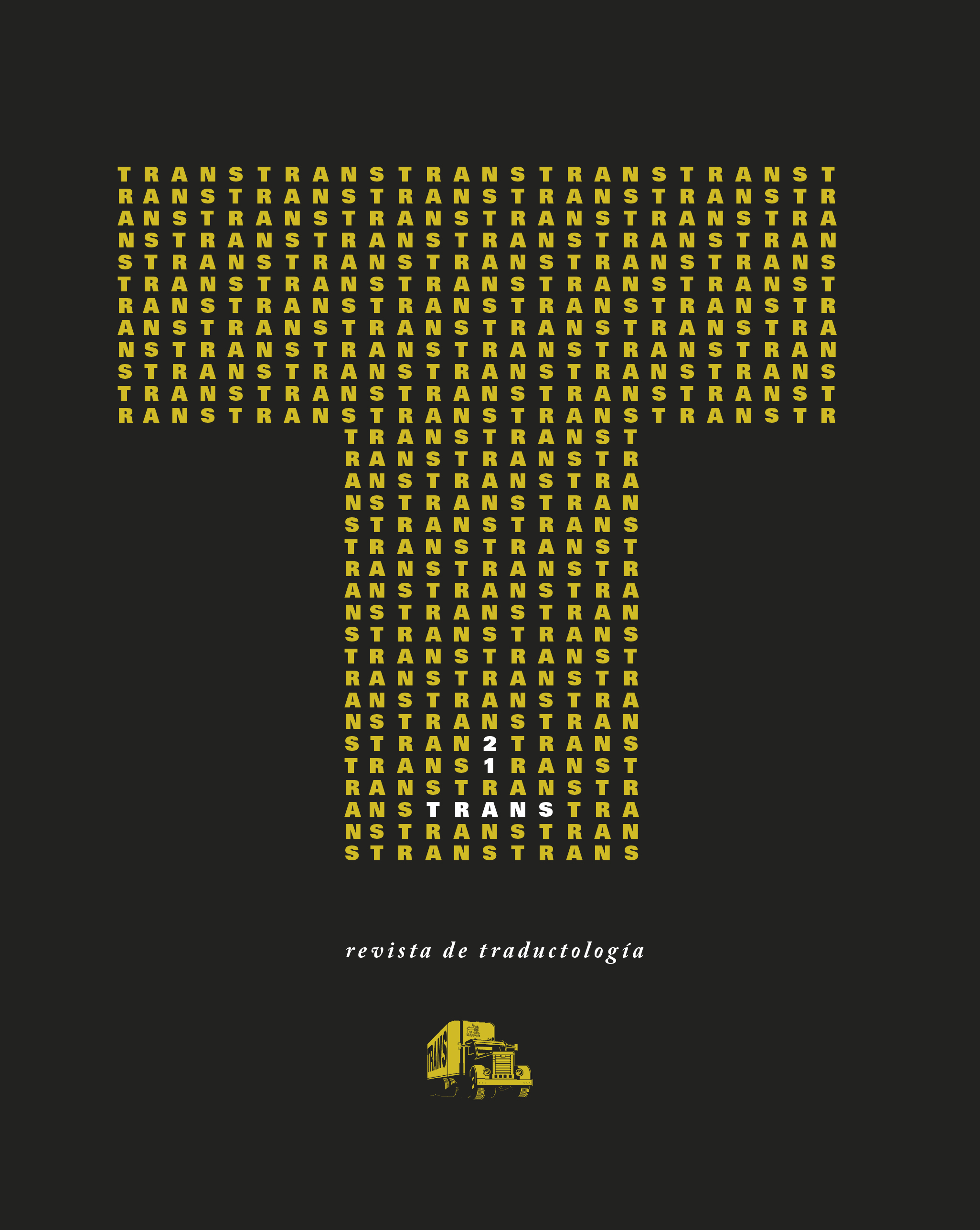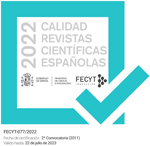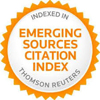El impacto de las diferencias tipológicas en el grado de percepción de dinamismo en los eventos de movimiento
DOI:
https://doi.org/10.24310/TRANS.2017.v0i21.3650Palabras clave:
Eventos de movimiento, Dinamismo, Inglés, Español, Traducción, RecepciónResumen
La traducción de los eventos de movimiento, basada en la teoría de Talmy sobre los patrones de lexicalización y en la teoría neorelativista de pensar para hablar de Slobin, ha sido una prolífica área de investigación. En los últimos años, encontramos una nueva línea de investigación sobre la recepción de la traducción de eventos de movimiento que argumenta que las diferencias tipológicas influyen en las percepciones que la audiencia meta tiene sobre el texto traducido. El objetivo del presente trabajo es examinar el posible impacto que las diferencias tipológicas entre el español y el inglés tiene en la recepción de textos originales en inglés y sus correspondientes traducciones al español en cuanto al grado de dinamismo de los eventos narrados. Con tal fin en mente, se eligieron 20 fragmentos de 5 novelas en inglés con su respectiva traducción al español y se les pidió a los participantes que valoraran el grado de dinamismo de los eventos en una escala de 1 a 4. Los resultados muestran que (a) las traducciones al español se consideraban igual de dinámicas cuando se perdía información sobre el evento de movimiento, así como cuando se lograba mantener toda la información del texto original y (b) sugieren que la particular elección léxica en algunos fragmentos en inglés junto con la naturaleza intrínseca del evento narrado parecen haber tenido un impacto en la audiencia anglófona.
Descargas
Métricas
Citas
Alonso, Rosa (2013): «Motion events in L2 acquisition: the boundary-crossing constraint in English and Spanish». US-China Foreign Language, 11/10, pp. 738-750.
Aske, John (1989): «Path predicates in English and Spanish: A closer look». Proceedings of the Berkeley Linguistics Society, 15, pp. 1-14.
Berman, Ruth & Slobin, Dan I. (1994): Relating events in narrative: A crosslinguistic developmental study. Hillsdale, NJ: Lawrence Erlbaum Associates.
Cappelle, Bert (2012): «English is less rich in manner-of-motion verbs when translated from French». Across Languages and Cultures, 13/2, pp.173-195.
Cifuentes-Férez, Paula (2009): A Crosslinguistic Study on the Semantics of Motion Verbs in English and Spanish, Munich: LINCOM.
— (2013): «El tratamiento de los verbos de manera de movimiento y de los caminos en la traducción inglés-español de textos narrativos». Miscelánea, 47, pp. 53-80.
Cifuentes-Férez, Paula & Rojo, Ana (2015): «Thinking for translating: a think-aloud protocol on the translation of manner-of-motion verbs», Target, 27/2, pp. 379-300.
Feist, Michele I. & Cifuentes-Férez, Paula (2013):«Remembering how: language, memory and the salience of manner», Journal of Cognitive Science 14/4, pp. 379-398.
Filipovi?, Luna (2007): Talking about Motion: A Crosslinguistic Investigation of Lexicalization Patterns. Amsterdam: John Benjamins.
— (2011a): «Speaking and remembering in one or two languages: Bilingual vs. monolingual lexicalization and memory for motion vents», International Journal of Bilingualism, 15/4, pp. 466-485.
— (2011b): Bilingual witness report and translation: Final research report. Manuscript, University of Cambridge.
Filipovi?, Luna & Geva, Sharon (2012): «Languagespecific effects on lexicalization and memory of motion events». In L. Filipovi? and K. Jaszczolt (eds.) Space and Time across Languages and Cultures:
Language Culture and Cognition [Human Cognitive Processing 37], Amsterdam: John Benjamins, pp. 269-282.
Filipovi?, Luna & Ibarretxe-Antuñano, Iraide (2015): «Motion». In E. Dabrowska & D. Divjak (Eds.), Mouton Handbook of Cognitive Linguistics, Berlin: Mouton de Gruyter, pp. 526-545.
Gentner, Dedre & Golding-Meadow, Susan 2003, Language in mind: Advances in the study of language and thought. Cambridge, MA: MIT Press.
Ibarretxe-Antuñano, Iraide (2003): «What translation tells us about motion: A contrastive study of typologically different languages», International Journal of English Studies 3/2, pp. 153-178.
— (2006): Sound symbolism and motion in Basque, Munich: Lincom Europa.
Ibarretxe-Antuñano, Iraide & Filipovi?, Luna (2013):«Lexicalisation patterns and translation». In A. Rojo & I. Ibarretxe-Antuñano (eds.), Cognitive Linguistics and Translation: Advances in Some Theoretical Models and Applications, Berlin and New York: Mouton de Gruyter, pp. 251-281.
Ikegami, Yoshihiko (1991): «“DO-language” and “BECOME-language”: Two contrasting types of linguistic representation». In Y. Ikegami (Ed.),
The empire of signs: semiotic essays on Japanese culture, Amsterdam/Philadelphia: John Benjamins Publishing Company, pp. 285-326.
Jaka, Aiora (2009): «Mugimenduzko ekintzak ingelesez eta euskaraz, Sarrionandiaren itzulpen baten azterketatik abiatuta» [Motion events in English and Spanish: a translation study], Uztaro 69: pp. 53-76.
Levin, Beth (1993): English Verb Classes and Alternations: A preliminary investigation. Chicago: The University of Chicago Press.
Loftus, Elizabeth F. & Palmer, John C. (1974): “Reconstruction of Automobile Destruction: An Example of the Interaction Between Language and Memory”. Journal of Learning and Verbal Behavior, 13/15, pp. 585-589.
Molés-Cases, Teresa (2015): «La “saliencia” de la manera en los eventos de movimiento. Propuesta de técnicas de traducción». In I. Ibarretxe-Antuñano & A. Hijazo-Gascón (eds.), New Horizons
in the study of Motion: bringing together applied and theoretical perspectives. Newcastle upon Tyne: Cambridge Scholars Publishing.
— (2016): La traducción de los eventos de movimiento en un corpus paralelo alemán-español de literatura infantil y juvenil. Frankfurt am Main: Peter Lang.
Rojo López, Ana & Cifuentes-Férez, Paula (2017):«On the reception of translations: Exploring the impact of typological differences on legal
contexts». In I. Ibarretxe-Antuñano, Iraide (ed.), Motion and space across languages and applications, Amsterdam, John Benjamins, pp. 367-398.
Slobin, Dan I. (1991): «Learning to think for speaking: Native language, cognition, and rhetorical style», Pragmatics, 1, pp. 7-26.
— (1996a): «From “thought and language” to “thinking for speaking”». In J. Gumperz & S. C. Levinson (Eds.), Rethinking Linguistic Relativity.
Cambridge: Cambridge University Press, pp.195–217.
— (1996b): «Two ways to travel: Verbs of motion in English and Spanish». In M. Shibatani & S. A. Thompson (Eds.), Essays in semantics, Oxford: Oxford University Press, pp. 195-219.
— (2003): «Language and thought online: Cognitive consequences of linguistic relativity». In D. Gentner & S. Goldin-Meadow (eds.), Language in mind Advances in the investigation of language
and thought, Cambridge, MA: the MIT Press, pp.157-191.
— (2004): «The Many Ways to Search for a Frog: Linguistic Typology and the Expression of Motion Events». In Relating Events in Narrative:
Typological and Contextual Perspectives in Translation, ed. by Sven Strömqvist and Ludo Verhoeven, Mahwah, NJ: Lawrence Erlbaum
Associates, pp. 219-257.
— (2005): «Relating narrative events in translation». In D. D. Ravid & H. Bat-Zeev Shyldkrot (Eds.), Perspectives on Language and Language Development: Essays in Honor of Ruth A. Berman, Dordrecht: Kluwer, pp. 115-129.
— (2006): «What Makes Manner of Motion Salient?» In M. Hickman & S. Robert (Eds.), Space in Languages: Linguistic Systems and Cognitive Categories, Amsterdam/Philadelphia: John Benjamins, pp. 59-82.
Slobin, Dan I. & Hoiting, Nini (1994): «Reference to movement in spoken and signed languages:Typological considerations». Proceedings of the Berkeley Linguistics Society, 20, pp. 487-505.
Strömqvist, Sven & Verhoeven, Ludo (eds.): (2004): Relating Events in Narrative: Typological and Contextual Perspectives, New Jersey: Lawrence Erlbaum.
Talmy, Leonard (1985): «Lexicalization patterns: Semantic structure in lexical forms». In T. Shopen (ed.), Language typology and lexical descriptions: Vol. 3. Grammatical categories and the lexicon, Cambridge: Cambridge University Press, pp. 36-149.
— (1991): «Path to realization: a typology of event conflation». Berkeley Linguistic Society,7, pp. 480-519.
— (2000): Toward a cognitive semantics: Vol. I & II. Cambridge, MA: MIT Press.
Trujillo, Jennifer (2003): The difference in resulting judgments when descriptions use high-manner versus neutral-manner verbs, unpublished senior dissertation, University of California Berkeley.
Publicado
Cómo citar
Número
Sección
Licencia
Todos los contenidos publicados en TRANS. Revista de Traductología están sujetos a la licencia Creative Commons Reconocimento-NoComercia-Compartirigual 4.0 cuyo texto completo puede consultar en <http://creativecommons.org/licenses/by-nc-sa/4.0>
Se pueden copiar, usar, difundir, transmitir y exponer públicamente, siempre que:
- Se cite la autoría y la fuente original de su publicación (revista, editorial y URL de la obra).
- No se usen para fines comerciales.
- Se mencione la existencia y especificaciones de esta licencia de uso.
- Compartir Igual — Si remezcla, transforma o construye sobre el material, debe distribuir sus contribuciones bajo la misma licencia que el original.
Los derechos de autor son de dos clases: morales y patrimoniales. Los derechos morales son prerrogativas perpetuas, irrenunciables, intransferibles, inalienables, inembargables e imprescriptibles. De acuerdo con la legislación de derechos de autor, TRANS. Revista de Traductología reconoce y respeta el derecho moral de los autores/as, así como la titularidad del derecho patrimonial, el cual será cedido a la Universidad de Málaga para su difusión en acceso abierto. Los derechos patrimoniales, se refieren a los beneficios que se obtienen por el uso o divulgación de las obras. TRANS. Revista de Traductología se publica en open access y queda autorizada en exclusiva para realizar u autorizar por cualquier medio el uso, distribución, divulgación, reproducción, adaptación, traducción o transformación de la obra.
Es responsabilidad de los autores/as obtener los permisos necesarios de las imágenes que están sujetas a derechos de autor.









21.png)
